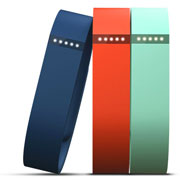
So you thought those photos and videos you sent using Snapchat or Poke — you know, the embarrassing ones — were supposed to self-destruct after being viewed by the intended recipient? Not so fast.
It turns out that there’s a way to save them that doesn’t require a lot of skill or expense.
BuzzFeed did a little testing, and found that when an iPhone on the receiving end of a message is plugged into a PC to sync, it is possible to search the phone’s temporary files and find the videos sent via Snapchat or Poke.
Snapchat is a social media startup that lets users send photos and videos to friends. The videos are supposed to disappear within a few seconds after viewing. Knowing this, users might push the limits of taste and decency.
Last week, Facebook got into the action by launching its Poke feature in the form of a mobile app that lets users send a quick message, photo or video to Facebook friends. The message doesn’t get posted, instead it expires within seconds and “the message disappears from the app.”
The Stark Light of the Photo
Facebook addressed concerns with an explanation that it does not promise a secure way to send images.
“Poke is a fun and easy way to communicate with your friends and is not designed to be a secure messaging system. While Pokes disappear after they are read, there are still ways that people can potentially save them. For example, you can take a screenshot of a photo, in which case the sender is notified. People could also take a photo of a photo you send them, or a video of a video, with another camera. Because of this, people should think about what they are sending and share responsibly,” Facebook spokesperson Johanna Peace told TechNewsWorld.
Worth a Thousand Words
“The issue is the question of the longevity of a digital message. It’s supposed to be a temporary item that’s not so temporary,” Roger Kay, principal at Endpoint Technologies Associates told TechNewsWorld. Digital information is very easy to replicate. “It’s a string of bits.”
The target audience includes people who share a lot of photos and videos, from selfies — or self portraits, to food porn and prank videos.
“These are meant for right now, just a laugh to share with friends,” said Kay.
The issue is that users may intend for photos and videos to be shared with an individual or a small group, but not everyone. If messages aren’t deleted, they can end up in the hands of someone not originally intended to receive them.
“There are many people with fingers in that digital stream, and they can pluck it out,” said Kay.
Even if the images didn’t live on the handset of the recipient, users should not feel assured that copies, or data surrounding those images, don’t exist elsewhere.
“I think for people who believe that they can send anything electronically and not be preserved are being naive,” Alan Webber, analyst at Altimeter Group, told TechNewsWorld.
Online services operate around data, and in order for an interaction to be useful, these services save some portion of data.
“If you have an application that effectively deletes or erases something, then that doesn’t help them out,” Webber said.
The Best Form of Flattery
Facebook joined the crowd by launching its Poke app Dec. 21, around the time Snapchat began to pick up activity — and controversy.
“With all this becoming well known, you would think these social sites would dry up and die, but they are still growing faster than ever,” tech industry analyst Jeff Kagan told TechNewsWorld. “Users would prefer the safety and privacy, but the funny thing is, even without it they don’t stop. They are still there front and center.”
Perhaps the public should live by the motto that when you hit the send button, it will forever become part of a personal archive.
“If you’re not willing for the whole world to see it, don’t send it,” said Webber. “I think we have to shift what we think.”





















































